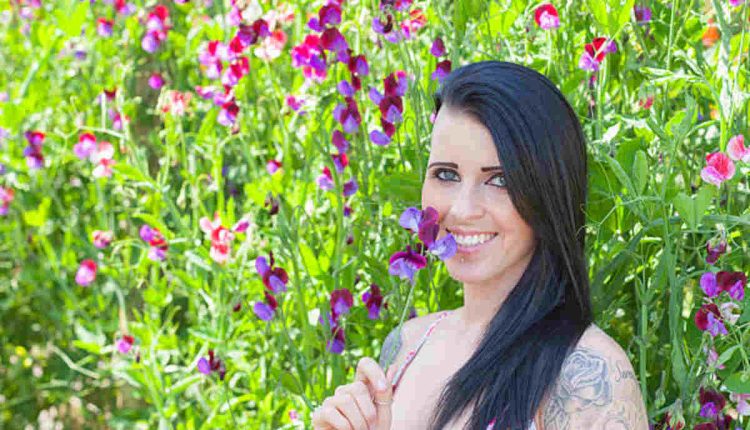Aurora Flower – The Princess of Sleeping Beauty
Aurora, the Princess of Sleeping Beauty, is a captivating character who can remember her past lives – a gift that helps her pursue Phillip through all their incarnations.
Mussaenda philippa dona aurora is a tropical shrub or small tree that thrives in warmer environments with high humidity levels, reaching heights up to 10 feet on the ground or 3 feet in containers.
Bleeding Heart Aurora
Dicentra formosa ‘Aurora, more commonly known as Fern-leaf Bleeding Heart, is an easy-to-grow perennial that flowers from late spring through early summer. This clump-forming plant features beautiful, fernlike foliage that adds texture to shaded garden beds and borders, with delicate blooms featuring inner petals protruding slightly out like blood drops, earning this perennial its common name: Bleeding Heart. Hummingbirds flock to it frequently, and its deer resistance makes it ideal for properties with livestock! Hummingbirds adore this shade-loving flower, while its deer-resistant status makes it perfect for gardens on properties with livestock!
Bleeding heart thrives best in part shade, although it will tolerate full sunlight in cool climates. To promote growth and maximize blooms, its rich humus soil should be moist but well-draining; regular fertilization will encourage its development and prolific blooms. If possible, avoid planting bleeding hearts in soil that’s too sandy or clay-like.
Aurora’s bleeding heart thrives in mixed containers, serving as an eye-catching accent alongside striking plants such as tulips and daffodils. It makes an ideal addition to woodland gardens or semi-shaded perennial borders; when grown in containers, it should be repotted every one to two years to prevent overcrowding; its striking colors pair beautifully with heucheras and coral bells, for example. When repotting, empty the old container’s contents to reduce transplant shock; fill your new pot with fresh soil containing some organic matter for optimal results!
Fritillaria Imperialis Aurora
The royal fritillaria, commonly called crown imperial, adds an exotic look to garden landscapes. This stately perennial comprises tall upright stems covered with pendulous blooms in yellow, orange, and red shades, native to much of central Asia, including Anatolia across Iran’s plateau to Afghanistan and the Himalayas.
Crown imperials can be grown quickly from bulbs. Plant these large fist-sized specimens in well-draining soil, ideally on gravel beds, in full sun with plenty of moisture for best results. As soon as established, clumps will become found over time in their new environment and begin spreading naturally across your property.
Crown Imperial is self-sterile; therefore, for it to reproduce itself successfully, different cultivars must be planted nearby to facilitate pollination and fertilization. A popular cultivar among growers is Maxima Lutea, which features bright yellow blooms that form an eye-catching royal crown shape.
Attracting attention with its vibrant flowers, but you’ll also appreciate its beautifully lush foliage is what sets this plant apart; you’ll understand its deep foliage as much as its vibrant flowers. Its dark green tones contrast beautifully against light-colored blooms for an eye-catching contrast in any landscape setting. Producing a mild fragrance and bees while deer and rabbit resistance make these an attractive choice in landscaping designs. Root rot can occur on this plant but can be avoided through good drainage practices with loose, fertile soil conditions.
Dona Aurora
Dona Aurora was known for being the wife of Philippine President Manuel Quezon and for speaking out in support of social welfare causes and her native province, Aurora. On April 28, 1946, however, Dona Aurora was brutally assassinated by rebel forces fighting to topple her government; those responsible included the Hukbalahap rebels.
Rebels ambushed her while traveling along a mountain road named for her in Baler. She traveled with her daughter, son-in-law, and Quezon City Mayor Ponciano Bernardo when the rebels ambushed. Although she had the authority to lead them all herself, she made the error of asking that her vehicle lead instead – this caused the armed men to identify this and fire on the caravan of cars carrying her entourage.
Mussaenda ‘Dona Aurora’ features flowers similar to its parent plant, Mussaenda philippica. The calyx lobes are petaloid and creamy white to greenish-white above, with prominent greenish veins below. This cultivar has become very popular throughout the Philippines and can be found in landscaped spaces, parks, and public gardens.
Dona Aurora is a highly adaptable flower, adapting well to various soil conditions and growing well individually or as part of groups in home gardens or as single specimens. Additionally, the Dona Aurora makes for excellent container gardening; it thrives in full sun or partial shade, reaching 6-8 feet when planted directly into the ground.
Cornus ‘Rutban’ Aurora dogwood tree
Cornus ‘Rutban’ Aurora is a hybrid cultivar developed at Rutgers University to resemble its native flowering dogwood species, featuring upright and vigorous growth characteristics similar to its parent species of native flowering dogwoods. As a good and vigorous grower, this tree offers more flowering vigor and foliage colors throughout spring-fall with vibrant reddish purple fall hues than is typically possible with conventional dogwood varieties. Furthermore, this tree boasts more excellent disease resistance than native flowering dogwood species parent species, such as native flowering dogwoods do.
Rutgers University initiated its breeding program in 1965 under the leadership of Elwin Orton, a horticultural plant breeder specializing in ornamentals. They aimed to produce novel flowering trees with superior color and growth habits while still retaining native qualities of cold hardiness, disease resistance, and fruit production.
Rutban stands out not only due to its superior performance but also for its gorgeous array of white flowers with pink tints – which bloom before producing delicious-tasting berries that provide shelter for overwintering birds.
Rutban dogwood trees make an excellent addition to front yards and other landscape areas where small specimen trees are desired. Ideal for both part sun and shade environments, Rutban’s low maintenance needs, once established, are minimal compared to similar varieties; furthermore, it has shown impressive resistance against powdery mildew and anthracnose, which affect native dogwood populations.


